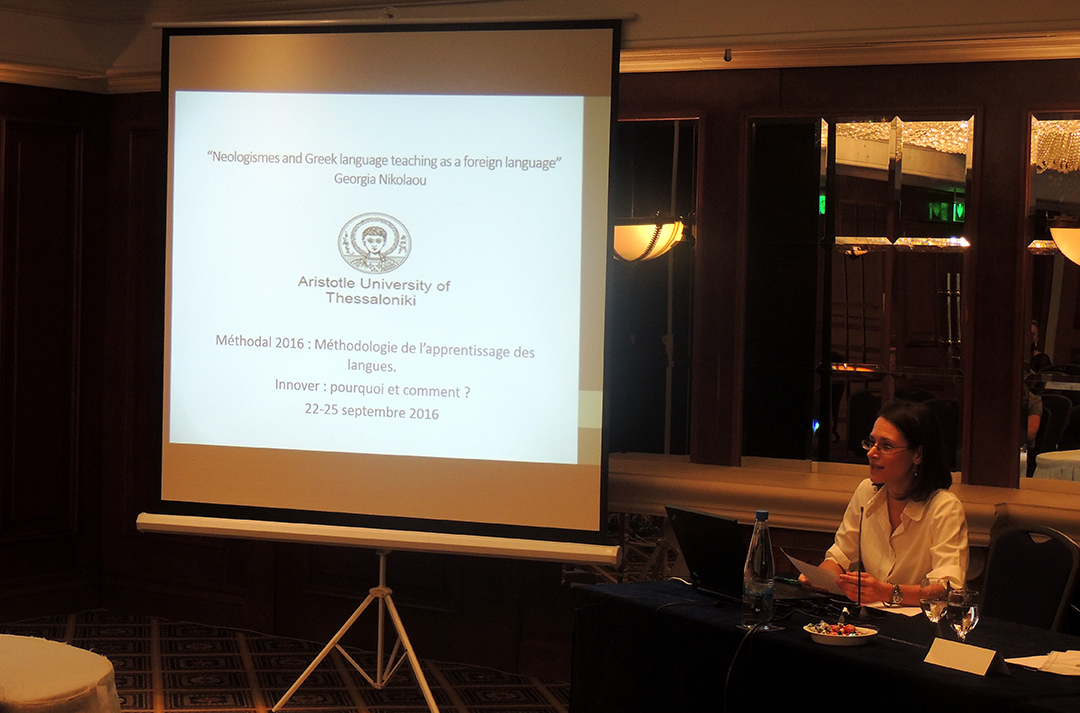Neologisms and Greek language teaching as a second or foreign language
It has already been pointed out in the international literature (Stahl & Nagy, 2006, Carlisle 2007, Anastassiadis-Symeonidis, 2003, Anastassiadis-Symeonidis et al., 2014) that vocabulary learning is vital for the students’ linguistic development, whether it is for the teaching of the mother language or for the acquisition of a second or foreign language. According to Anastassiadis-Symeonidis & Mitsiaki (2010) the strategy of morphological segmentation can prove particularly useful in the teaching of Greek as a foreign language, as it (a) combines language processing with the evaluation of the lexical meaning, (b) has memory-preserving effects on students and (c) helps students comprehend the way new words are coined in the target language. Furthermore, it has been proved (Kefalidou & Politis, 2014) that the use of news texts (both written and oral) and the teaching of academic discourse (Katsalirou, 2014) help students master the use of different text types that occur in specific contexts and prepare them for their studies in Greek medium universities. The aim of this paper is to prove that the use of neologisms in Greek language teaching as a foreign language meets the three criteria mentioned above and should be integrated in current teaching methodologies. Based on a wide selection of real newspaper articles that contain a considerable amount of new words (loans, compound lexical units and derived words), we shall try to present and thoroughly describe a teaching scenario (Iordanidou & Papaioannou, 2014) within the approach of content-based instruction addressing to advanced learners of Modern Greek language as a foreign language. Our final conclusion is that with the successful implementation of neologisms in language teaching not only do students develop a deeper connection with the target language, but they also acquire extremely useful knowledge about the cultural norms of a different linguistic community. We believe that our approach sheds a new light on the intriguing field of neology and invites instructors to explore together with their students new ways of being creative in language lessons.
